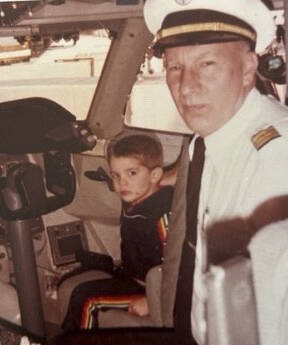Amelia Earhart and her navigator, Fred Noonan, vanished without a trace in July 1937 during their attempt to circumnavigate the globe, with a refueling stop on Howland Island being their last known location. Despite a 16-day search at the time, no sign of them or their aircraft was ever found.
Declared dead two years later by the U.S. authorities, the mystery of Earhart’s disappearance has remained one of the enduring enigmas of modern history.
Now, a former resident of Forks and FHS graduate, Tony Romeo, is on a mission to potentially unravel this mystery.
Following his graduation from Forks High, Romeo embarked on a diverse journey—he ventured to Colorado, served in the Air Force, resided in New Mexico, Texas, and Florida, graduated law school, and worked for a tech company in Washington, D.C., before joining Zillow in Seattle. However, Romeo felt compelled to “switch it up.”
A licensed pilot himself, Romeo founded Deep Sea Vision, investing in sonar equipment to aid in his quest. Inspired by his family’s aviation background—his father was a Pan Am pilot for over four decades—he felt a personal connection to Earhart’s story and the unanswered questions surrounding her disappearance.
After meticulous planning over 18 months, Romeo and a team of 16 chartered a special survey vessel used for the remote Pacific search for Earhart’s plane.
Their efforts were rewarded when underwater drones captured images of a plane-like shape, believed by Romeo to be Earhart’s Lockheed 10-E Electra, approximately 100 miles from Howland Island, between Australia and Hawaii.
Despite this promising discovery, Romeo acknowledges the need for further investigation.
With plans to return to the area late this year or early 2025, he aims to to continue the search, bolstered by the extensive documentation of their efforts, which has amassed around 400 hours of content.
The unexpected media attention surrounding their findings, including coverage by the Wall Street Journal, has both surprised and pleased Romeo, who also appreciates the support from friends in his hometown of Forks.
Reflecting on his own family history, there are parallels between Earhart’s pioneering spirit and the resilience of his grandmother, Mina Smith Romeo, who homesteaded in the Dickey River area raising a family at times as a single mother in the early 1900s.
Despite his ventures far from home, Romeo fondly recalls his roots in Forks, reminiscing about the annual Forks 4th of July celebration and the tradition of attending the Frog Jump at Tillicum Park. Also, missing picking thimbleberries on the Quillayute Prairie.
While it remains too early to definitively confirm the identity of the discovered aircraft, the prospect of uncovering Earhart’s long-lost plane is undeniably thrilling.



